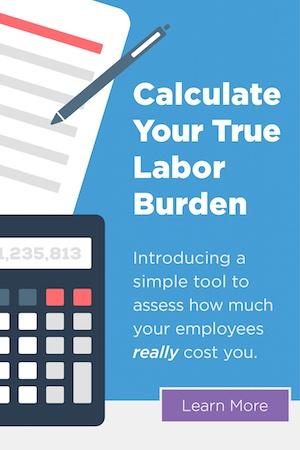The U. S. Department of Labor (DOL) recently announced that the minimum salary an employee needs to earn to be considered exempt from overtime pay under so-called “white-collar” exemptions will rise soon. The DOL’s objective is to increase the number of employees eligible for overtime, and this change will impact around 4 million workers.
Do your pay practices align with this change?
Previously, under the federal Fair Labor Standards Act (FLSA) employees who work more than 40 hours in a workweek must be paid an overtime premium of 1.5 times their regular pay rate for all additional hours worked. The only exception is when they fall under an exemption marked by a minimum salary requirement.
The clock is ticking.
This change will go into effect in two phases. The first phase starting July 1st, 2024, where the minimum salary threshold for “white-collar” exemptions will rise from $684 per week or $35,568 per year to $43,888 per year. The second phase will take place January 1st, 2025, and will require the new minimum salary threshold to rise to $58,656 annually.
The threshold for the “highly compensated employee” (HCE) exemption will also rise from the current $107,432 per year to $132,964 on July 1st, 2024, and then to $151,164 on January 1st, 2025.
Please always review the state laws that apply to you since some states may have different wage and hour requirements, exemptions or exceptions, and some states may not have salary thresholds. Aside from FLSA regulations, many states have detailed requirements and/or provisions for non-exempt/exempt employees.
What does this mean for employers?
This threshold increase means your employees will need to earn at least the annual salaries listed to be exempt from overtime pay. The significant salary threshold increases will require significant planning and budgeting if you currently have exempt employees who earn less than the salary floors listed above.
What to expect moving forward?
In addition to the salary threshold increases coming up soon, the salary threshold will be automatically updated every three years starting on July 1st, 2027.
But wait, there’s more!
White-collar exemptions have three more requirements on top of a minimum salary.
- Get paid on a salary basis instead of hourly;
- Be paid at least the minimum weekly salary; and
- Perform the primary duties required to meet both state and federal wage and hour law requirements.
How can you prepare to meet the new requirements?
- It can help you to list your exempt employees who earn from $35,568 to $58,656 per year and create another list of HCEs who earn from $132,964 to $151,164.
- Your next step would be to decide whether to offer them a salary increase or switch them to non-exempt status based on the hours they’re working and the overall DOL requirements.
- Regardless of your chosen course of action you must plan to provide your employees with advance notice of any changes that go into effect, like timekeeping, meal and rest breaks, any new responsibilities, among others. Please keep in mind that some states require employers to submit an advance notice of wage changes, so always check your local requirements.
- Review and reevaluate your policies on company equipment and personal device use if you are making any exempt/non-exempt employee changes. Make sure you apply these policies consistently.
- Provide a detailed training plan for newly reclassified employees and their managers before the changes go into effect. The training required will vary between businesses, but some items to consider include overtime approval policies, scheduled work hours, and rules about lunches and breaks.
Keep an eye out on legal updates.
Although some states and businesses are expected to attempt to sidetrack or derail the rule, it’s wise to prepare in advance considering the final rule will go into effect as initially planned.


